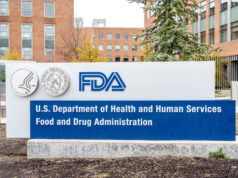
The number of cardiovascular drugs in the research pipeline has declined across all phases of development in the last 20 years—even as cardiovascular disease has become the number one cause of death world-wide, according to research published in JACC: Basic to Translational Science.
Researchers analysed data from a large commercial database of drug development activity, which tracks the pipeline of pharmaceutical research and development projects. The study included all products that had entered phase one clinical trials between January 1, 1990, and December 31, 2012, and focused on drugs intended to treat cardiovascular disorders.
During the trial period, 347 cardiovascular drugs entered phase one testing, with the most common types being antihypertensive agents, lipid-lowering agents and anticoagulants. The number of cardiovascular drugs entering clinical trials in all stages of development declined over time. Between 1990 and 1995, 108 of 679 (16%) of phase one trials were initiated for cardiovascular drugs, compared to 125 of 2,366 (5%) of phase one trials between 2005 and 2012. Cardiovascular drugs accounted for 21% of phase three trials in 1990 but only 7% in 2012. In comparison, the number of cancer drugs increased over the same time period.
“These findings shed light on several important shifts in cardiovascular research and development activity over the past two decades. Importantly, while the overall number of new investigational cardiovascular drugs has declined, we also found a relative growth in the number of drugs targeting novel biological pathways ,” says Aaron S Kesselheim, associate professor of medicine at Brigham and Women’s Hospital and Harvard Medical School (Cambridge, USA) and the senior author of the study.
Half of cardiovascular drugs entering phase three trials targeted a novel biological pathway, or one for which the US Food and Drug Administration (FDA) had not yet approved a therapeutic agent. The rate of novel drugs entering phase three increased from 27% in 1990-1991 to 57% in 2012.
While the development of most cardiovascular drugs was sponsored by large pharmaceutical companies, the number sponsored by small and medium-sized companies grew over time.
“These findings are not entirely glass-half empty,” says Douglas L Mann, editor-in-chief of JACC: Basic to Translational Science. “Part of the decline in new drugs is that there are less ‘me too’ drugs that are similar to those already available. The study also refutes the premise that cardiovascular drugs are often riskier to develop than drugs in other clinical categories.”
In an editorial comment accompanying the study, Mona Fiuzat and colleagues from the FDA emphasise the need for more translational basic research to identify new drug targets and the need to develop better strategies to identify successful drug candidates in phase two.
“Because drug development follows science, continued investment in the basic biology of cardiovascular disease is needed, and because large populations are impacted, attention to improved efficiency of the evidence generation system will be needed to generate needed sample sizes for definitive trials at a lower cost,” they say. “Finally, involving the full community including industry, the National Institutes of Health, academic experts, funding agencies, regulators, practitioners, and patients will be an important step in strengthening the science and advancing the field.”












